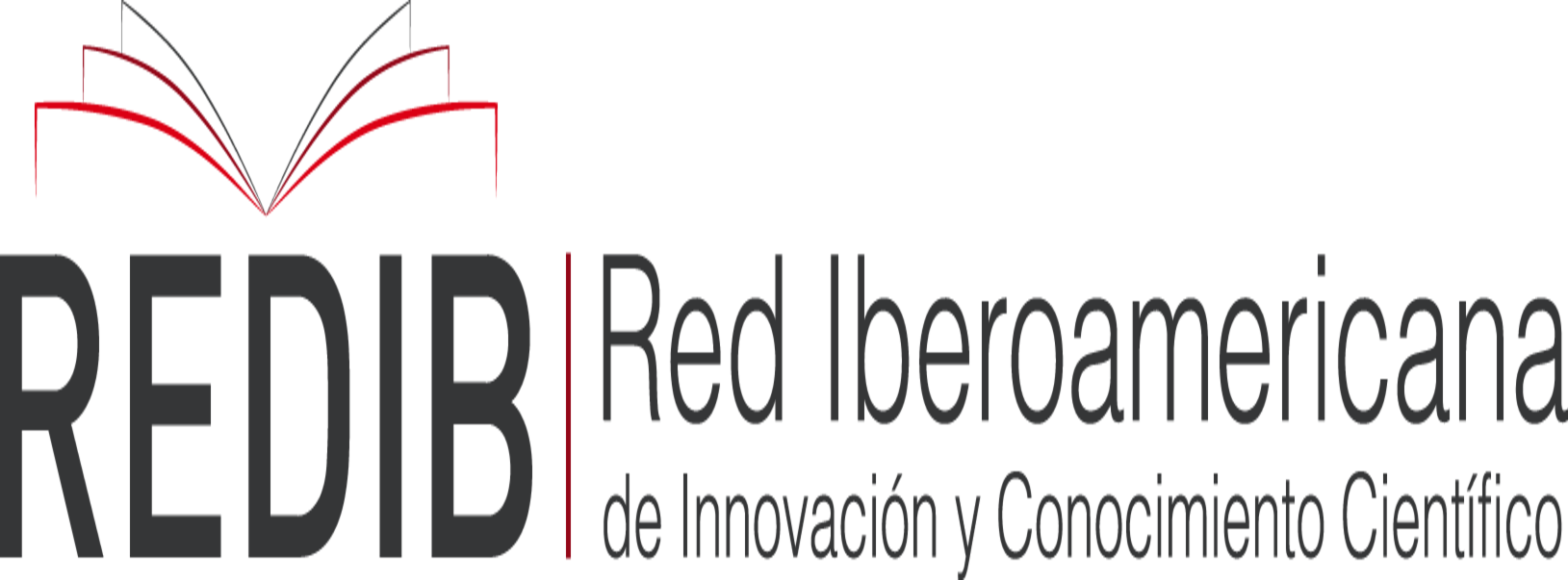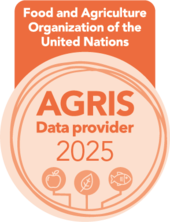Identificación genética de bacterias ácido lácticas nativas en leche cruda de vaca y queso Poro artesanal
DOI:
https://doi.org/10.17268/manglar.2021.001Abstract
El sabor y aroma de los quesos se debe a la diversidad de compuestos producidos por los microorganismos, que actúan durante el cuajado de la leche y maduración de los quesos. El objetivo aquí fue, identificar bacterias ácido lácticas en leche cruda de vaca y el queso Poro artesanal que se elabora en Tabasco, México. El aislamiento de las bacterias lácticas (BAL) se realizó sobre agar MRS, LBS y M17. Las cepas aisladas fueron caracterizadas por morfología, tinción de Gram, pruebas bioquímicas y crecimiento a diferentes concentraciones de cloruro de sodio (NaCl) y pH. La identificación genética inició con la extracción del ADN, amplificación del gen ARN ribosomal 16S con cebadores universales para bacterias. Las amplificaciones resultantes fueron secuenciadas en un laboratorio externo. Se identificaron 31 BAL, donde se observó Lactobacillus rhamnosus (38,71%), Lactobacillus fermentum (29,03%), Lactobacillus plantarum (6,45%) en muestras de leche y queso. También se identificó Enterococcus durans (6,45%) en leche y Lactobacillus farciminis (3,23%) en queso Poro. Todas reportadas por sus características biotecnológicas, tal como cultivos iniciadores. Estos resultados serán la base para formular y estabilizar un cultivo iniciador, que pueda ser utilizado en la elaboración del queso Poro con leche pasteurizada.
Downloads
References
Agudelo, L.N., Mabel, M., Torres-Taborda, M.M., Álvarez-López, C., & Vélez-Acosta, L.M. (2015). Bacteriocinas producidas por bacterias ácido lácticas y su aplicación en la industria de alimentos. Revista de la Asociación Colombiana de Ciencia y Tecnología de los alimentos, Alimentos hoy, 23(36), 186-205.
Altschul, S.F., Gish, W., Miller, W., Myers, E.W. & Lipman, D.J. (1990). Basic local alignment search tool. Journal of molecular biology, 215(3), 403-410.
Borreani, G., Ferrero, F., Nucera, D., Casale, M., Piano, S., & Tabacco, E. 2019. Dairy farm management practices and the risk of contamination of tank milk from Clostridium spp. and Paenibacillus spp. spores in silage, total mixed ration, dairy cow feces, and raw milk. Journal of Dairy Science, 102(9), 8273-8289.
Canpolat, E., & Biterge-Süt, B. (2019). Determination of Antibiotic and Heavy Metal Resistance in Paenibacillus lautus 51ATA. Turkish Journal of Agriculture - Food Science and Technology, 7(9), 1465-1468.
Caro, I., Mateo, J., Sandoval, M.H., Soto, S., García-Armesto, M.R., & Castro, J.M. (2013). Characterization of Oaxaca raw milk cheese microbiota with interest in Lactobacillus strains, Journal of Dairy Science, 96(6), 3461-3470.
Carr, F. J., Chill, D., & Maida, N. (2002). The lactic acid bacteria. Critical Reviews in Microbiology, 4(7), 665-666.
De Filippis, F., Genovese, A., Ferranti, P., Gilbert, J. A., & Ercolini, D. (2016). Metatranscriptomics reveals temperature-driven functional changes in microbiome impacting cheese maturation rate. Scientific Reports, Nature, 6(21871), 1-11.
De Souza, B.M.S., Borgonovi, T.F., Casarotti, S.N., Todorov, S.D., & Penna, A.L.B. (2019). Lactobacillus casei and Lactobacillus fermentum Strains Isolated from Mozzarella Cheese: Probiotic Potential, Safety, Acidifying Kinetic Parameters and Viability under Gastrointestinal Tract Conditions. Probiotics and Antimicrobial Proteins, 11(2), 382-396.
Domingos-Lopes, M.F.P, Stanton, C., Ross, P.R., Dapkevicius, M.L.E., & Silva, C.C.G. (2017). Genetic diversity, safety and technological characterization of lactic acid bacteria isolated from artisanal Pico cheese. Food Microbiology, 63, 178-190.
Edwards, U., Rogall, T., Blöcker, H., Emde. M., & Böttger, E.C. (1989). Isolation and direct complete nucleotide determination of entire genes. Characterization of a gene coding for 16S ribosomal RNA. Nucleic Acids Res, 17(19), 7843-7853.
El-Zamkan, M.A., & Mohamed, H.M.A. (2018). Molecular detection of Enterobacter spp. and other related species in powdered milk infant formula and milk powder. Journal of Food Safety, 38(6), e12538.
Fuka, M.M., Maksimovic, A.Z., Tanuwidjaja, I., Hulak, N., & Schloter, M. (2017). Characterization of Enterococcal Community Isolated from an Artisan Istrian Raw Milk Cheese: Biotechnological and Safety Aspects. Food Technology and Biotechnology, 55 (3): 368‐380.
Gou, J. J.; Liu, N.; Guo, L. H.; Xu, H.; Lv, T.; Yu, X.; Chen, Y. B.; Guo, X. B.; Rao, Y. T.; & Zheng, B. W. 2020. Carbapenem-Resistant Enterobacter hormaechei ST1103 with IMP-26 Carbapenemase and ESBL Gene blaSHV-178. Infection and drug resistance, 13, 597-605.
Guarrasi, V., Sannino, C., Moschetti, M., Bonanno, A., Di Grigoli, A., & Settanni, L. (2017). The individual contribution of starter and non-starter lactic acid bacteria to the volatile organic compound composition of Caciocavallo Palermitano cheese. International journal of food microbiology, 259, 35-42.
Innocente, N., Biasutti, M., Rita, F., Brichese, R., Comi, G.; & Iacumin, L. (2016). Effect of indigenous Lactobacillus rhamnosus isolated from bovine milk on microbiological characteristics and aromatic profile of traditional yogurt. LWT - Food Science and Technology, 66, 158-164.
Jans, C., & Boleij, A. (2018). The Road to infection: Host-Microbe Interactions Defining the Pathogenicity of Streptococcus bovis/Streptococcus equinus Complex Members. Frontiers Microbiology, 9, 603.
Jans, C., Meile, L., Lacroix, C., & Stevens, J.A.M. (2015). Genomics, evolution, and molecular epidemiology of the Streptococcus bovis/Streptococcus equinus complex (SBSEC). Infection, Genetics and Evolution, 33, 419-436.
Jans, C., de Wouters, T., Bonfoh, B., Lacroix, C., Mulwa, K.D.W., Anderegg, J., Böck, D., Vitali, S., Schmid, T., Isenring, J., Kurt, F., Kogi-Makau, W., & Meile, L. (2016). Phylogenetic, epidemiological and functional analyses of the Streptococcus bovis/Streptococcus equinus Complex through an overarching MLST scheme. BMC Microbiology, 16(117): 1-16.
Jurado, G.H., Martínez, B.J., Romero, B.D.A., Morillo, G.J.A., Orbes, V.A.E., & Mesías, P.L.N. (2017). Cinética de fermentación, pruebas de desafío in vitro y efecto de inhibición de Lactobacillus gasseri ATCC 19992. Veterinaria y Zootecnia, 10(2), 72–89.
Kaindi, D., Kogi-Makau, W., Lule, G.N., Kreikemeyer, B., Renault, P., Bonfoh, B., Otaru, N., Schmid, T., Meile, L., Hattendorf, J., & Jans, C. (2018). Colorectal cancer-associated Streptococcus infantarius subsp. Infantarius differ from a major dairy lineage providing evidence for pathogenic, pathobiont and food-grade lineages. Scientific reports, 8(1), 9181.
Lavari, L., Páez, R., Cuatrin, A., Reinheimer, J., & Vinderola, G. (2014). Use of cheese whey for biomass production and spray drying of probiotic Lactobacilli. The Journal of dairy research, 81(3), 267-274.
Li, J., Huang, Q., Zheng, X., Ge, Z., Lin, K., Zhang, D., Chen, Y., Wang, B., & Shi, X. (2020). Investigation of the Lactic Acid Bacteria in Kazak Cheese and Their Contributions to Cheese Fermentation. Frontiers in microbiology, 11, 228.
Mangwani, N., Kumari, S., Shukla, S.K., Rao, T.S., & Das, S. (2014). Phenotypic Switching in Biofilm-Forming Marine Bacterium Paenibacillus lautus NE3B01. Current Microbiol, 68, 648-656.
Mead, D.A., Lucas, S., Copeland, A., Lapidus, A., Cheng, J-F., Bruce, D.C., Goodwin, L.A., Pitluck, S., Chertkov, O., Zhang, X., Detter, J.C., Han, C.S., Tapia, R., Land, M., Hause, L.J., Chang, Y-J., Kyrpides, N.C., Ivanova, N.N.I., Ovchinnikova, G., Woyke, T., Brumm, C., Hochstein, R., Schoenfeld, T., & Brumm, P. (2012). Complete Genome Sequence of Paenibacillus strain Y4.12MC10, a Novel Paenibacillus lautus strain Isolated from Obsidian Hot Spring in Yellowstone National Park. Standards in Genomic Sciences, 6(3), 381–400.
Montel, M-C., Buchin, S., Mallet, A., Delbes-Paus, C., Vuitton, D.A., Desmasures, N., & Berthier, F. (2014). Traditional cheeses: Rich and diverse microbiota with associated benefits. International Journal of Food Microbiology, 177, 136-154.
Moraes, P.M., Perin, L.M., Todorov, S.D., Silva, A. Jr., Franco, B.D., & Nero, L.A. (2012). Bacteriocinogenic and virulence potential of Enterococcus isolates obtained from raw milk and cheese. Journal of Applied Microbiology, 11(2), 318-328.
Nero, L.A., & de Carvalho, A.F. (2019). Challenges for Production and Consumption of Raw Milk and Raw Milk Products, Raw Milk, Spain. Academic Press, 351-362 pp.
Piva, S., Pietra, M., Serraino, A., Merialdi, G., Magarotto, J., & Giacometti, F. (2019). First description of Streptococcus lutetiensis from a diseased cat. Letters in Applied Microbiology, 69(2), 96-99.
Pieniz, S., Andreazza, R., Anghinoni, T., Camargo, F., & Brandelli, A. (2014). Probiotic potential, antimicrobial and antioxidant activities of Enterococcus durans strain LAB18s. Food Control, 37: 251-256.
Pieniz S., de Moura, T.A., Vaz, C.A.P., Andreazza, R., Guedes F.A.P., de Oliveira C.F.A., & Brandelli, A. (2015). Evaluation of resistance genes and virulence factors in a food isolated Enterococcus durans with potential probiotic effect. Food Control, 51, 49-54.
Pompilio, A., Di Bonaventura, G., & Gherardi, G. (2019). An Overview on Streptococcus bovis/Streptococcus equinus Complex Isolates: Identification to the Species/Subspecies Level and Antibiotic Resistance. International Journal of Molecular Sciences, 20(3),480: 2-15.
Portilla-Vázquez, S., Rodríguez, A., Ramírez-Lepe, M., Mendoza-García P.G., & Martínez, B. (2016). Biodiversity of bacteriocin producing lactic acid bacteria from Mexican regional cheeses and their contribution to milk fermentation. Food Biotechnology, 30(3), 155-172.
PROY-NOM-109-SSA1-1994. Bienes y Servicios, Procedimientos para la toma, manejo y transporte de muestras de alimentos para su análisis microbiológico. Norma Oficial Mexicana. Secretaría de Salud.
Ramírez, R.J.C., Rosas, U.P., Velázquez, G.M.Y., Ulloa, J.A., & Arce R.F. (2011). Bacterias lácticas: Importancia en alimentos y sus efectos en la salud. Revista Fuente, 2(7), 1-16.
Rojas-Herrera, R., Narváez-Zapata, J., Zamudio-Maya, M., & Mena-Martínez, M.E. (2008). A Simple Sílica-based Method for Metagenomic DNA Extraction from Soil and Sediments. Molecular Biotechnology, 40, 13-17.
Sáez-Nieto, J.A., Medina-Pascual, M.J., Carrasco, G., Garrido, N., Fernández-Torres, M.A., Villalón, P., & Valdezate, S. (2017). Paenibacillus spp. isolated from human and environmental samples in Spain: detection of 11 new species. New Microbes and New Infections, 19, 19-27.
Sanger, F., Nicklen, S., & Coulson, A.R. (1977). DNA sequencing with chain-terminating inhibitors. Proceedings of the National Academy of Sciences of the United States of America, 74(12), 5463-5467.
Scheldeman, P., Goossens, K., Rodriguez-Diaz, M., Pil, A.; Goris, J., Herman, L., De Vos, P., Logan N. A., & Heyndrick, M. (2004). Paenibacillus lactis sp. nov., isolated from raw and heat-treated milk. International Journal of Systematic and Evolutionary Microbiology, 54, 885-891.
Schlegel, L., Grimont, F., Ageron, E., Grimont P.A.D., & Bouvet, A. (2003). Reappraisal of the taxonomy of the Streptococcus bovis / Streptococcus equinus complex and related species: description of Streptococcus gallolyticus subsp. gallolyticus subsp. nov., S. gallolyticus subsp. macedonicus subsp. nov. and S. gallolyticus subsp. pasteurianus subsp. nov. International Journal of Systematic and Evolutionary Microbiology, 53, 631.645.
Sgarbi, E., Lazzi, C., Tabanelli, G., Gatti, M., Neviani, E., & Gardini, F. (2013). Nonstarter lactic acid bacteria volatilomes produced using cheese components. Journal of dairy science, 96(7), 4223-4234.
Strom, K., Sjogren, J., Broberg, A., & Schnurer, J. (2002). Lactobacillus plantarum MiLAB 393 produces the antifungal cyclic dipeptides Cyclo (L‐Phe‐L‐Pro) and Cyclo (L‐Phe‐trans‐4‐OH‐L‐Pro) and 3‐phenyllactic acid. Applied and Environmental Microbiology, 68(9), 4322-4327.
Tian, H., Shen, Y., Yu, H., He, Y., & Chen, C. (2017). Effects of 4 probiotic strains in coculture with traditional starters on the flavor profile of yogurt. J. of Food Science, 82(7), 1693-1701.
Vásquez, S., Suárez, H., & Zapata, S. (2009). Utilización de sustancias antimicrobianas producidas por bacterias ácido lácticas en la conservación de la carne. Revista Chilena Nutrición, 36(1), 64-71.
Villanueva-Carvajal, A., Jiménez-Guzmán, J., García-Garibay, M., & Díaz-Ramírez, M. (2018). Queso de Poro de Balancan: Efecto del Proceso de Elaboracion sobre las Propiedades de Inocuidad Sensorial y Funcionales. AGROProductividad, 11(11): 49+. Gale OneFile: Informe Académico.
Wang, Z., Duan, L., Liu, F., Hu, Y., Leng, C., Kan, Y., Yao, L., & Shi, H. (2020). First report of Enterobacter hormaechei with respira-tory disease in calves. BMC Veterinary Research, 16(1), 1-4.
Yadav, S., & Dubey, S.K. (2018). Cellulose degradation potential of Paenibacillus lautus strain BHU3 and its whole genome sequence. Bioresource Technology, 262, 124-131.
Yoon, Y., Lee, S., & Choi, K-H. (2016). Microbial benefits and risks of raw milk cheese. Food Control, 63, 201-215.
Zamudio-Maya, M., Narváez-Zapata, J., & Rojas-Herrera, R. (2008). Isolation and identification of lactic acid bacteria from sediments of a coastal marsh using a differential selective medium. Letters in Applied Microbiology, 46(3), 402-407.
Zhang, Y., Zhuang, J., Pang, H., Wang, Y., Li, Y., & Zhang, J. (2019). Paenibacillus luteus sp. nov., isolated from soil. International journal of systematic and evolutionary microbiology, 69(8), 2354-2359.
Zheng, J., Wittouck, S., Salvetti, E., Franz, C.M.A.P., Harris, H.M.B., Mattarelli, P., O’Toole, P.W., Pot, B., Vandamme, P., Walter, J., Watanabe, K., Wuyts, S., Felis, G.E., Gänzle, M.G., & Lebeer, S. (2020). A taxonomic note on the genus Lactobacillus: Description of 23 novel genera, emended description of the genus Lactobacillus Beijerinck 1901, and union of Lactobacillaceae and Leuconostocaceae. International Journal of Systematic and Evolutionary Microbiology, 70, 2782-2858.
Downloads
Published
Issue
Section
License
Copyright (c) 2022 J. Ulises González-de la Cruz, J. Jessica J. Rodríguez-Palma, Karla S. Escalante-Herrera, Lázaro de la Torre Gutiérrez, Rosalva Pérez-Morales, Ma. Concepción de la Cruz-Leyva

This work is licensed under a Creative Commons Attribution 4.0 International License.

Manglar is an open access journal distributed under the terms and conditions of Creative Commons Attribution 4.0 International license









